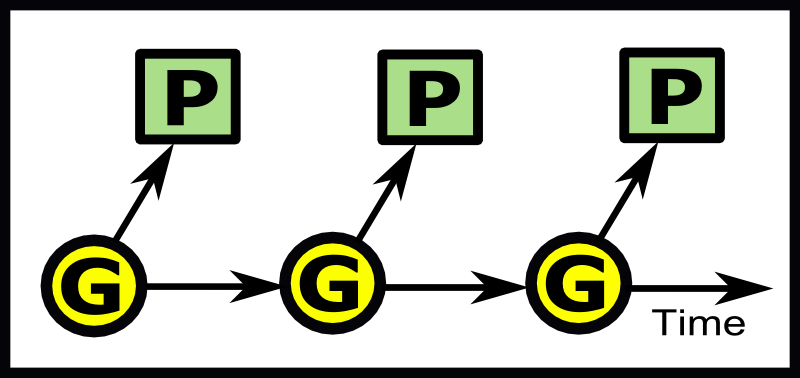
The gene products do go on to influence the genes via selection - as illustrated by the dotted lines in this diagram:
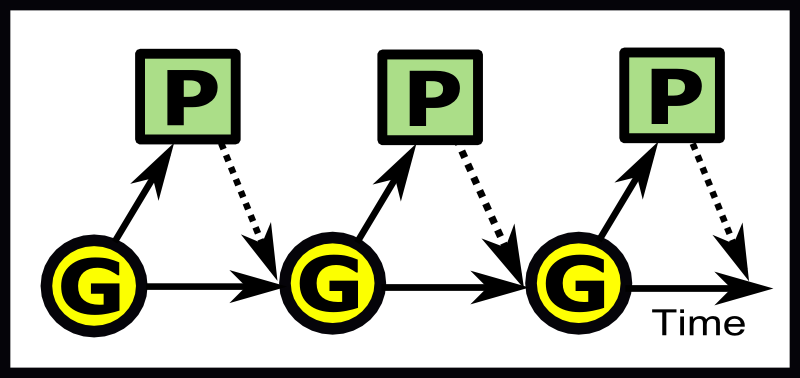
However, for the sake of simplicity, we won't attempt to illustrate the effect of selection in the next diagrams. The next one shows a host lineage and a parasite lineage:
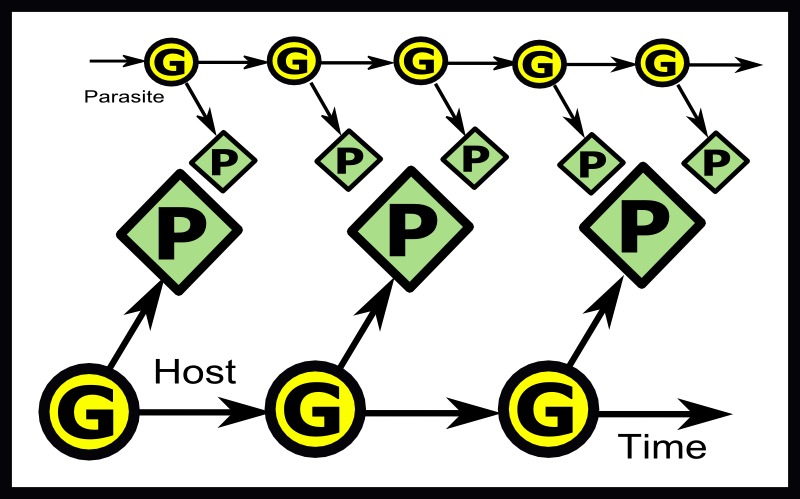
The parasite generations are faster than the host generations. Often many orders of magnitude faster, so the picture is not to scale.
The next picture is of a host lineage and the lineage of a cultural symbiont:
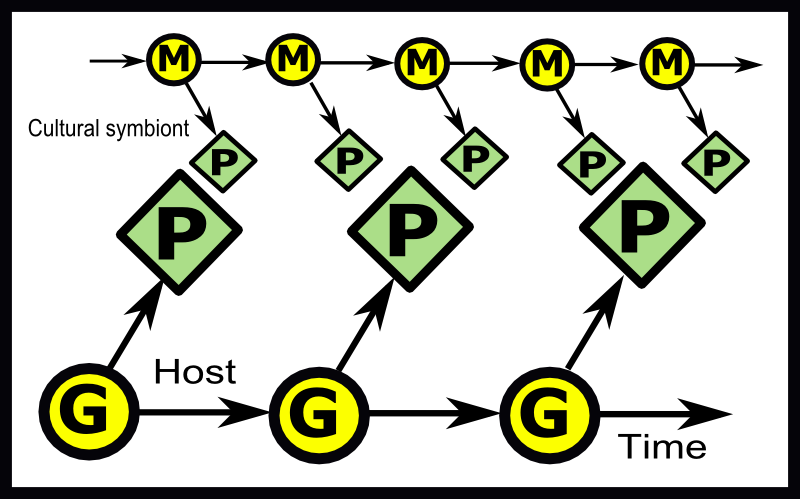
This represents our modern understanding of how culture evolves. Notice the similarity with the host-parasite picture. Like parasites most cultural symbionts have shorter generation times than their hosts, are more diverse than them, and are much more numerous than them.
In the last two diagrams, many of those in academia might choose to picture the gene products and meme products as being more entangled with each other than this diagram shows - but the basic picture is essentially the same.
Lastly, here's a diagram from Boyd and Richerson's 1985 book, page 6:
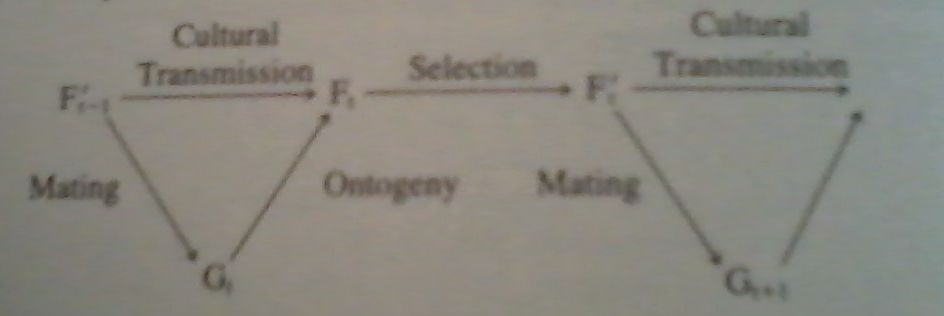
To me, it seems as though, back then, the pair didn't have a very modern-looking conception of how cultural evolution works. They pictured cultural inheritance as part of the phenotype. These days, most students of memetics usually regard cultural inheritance as more like a genotype - with a parallel inheritance track.










No comments:
Post a Comment